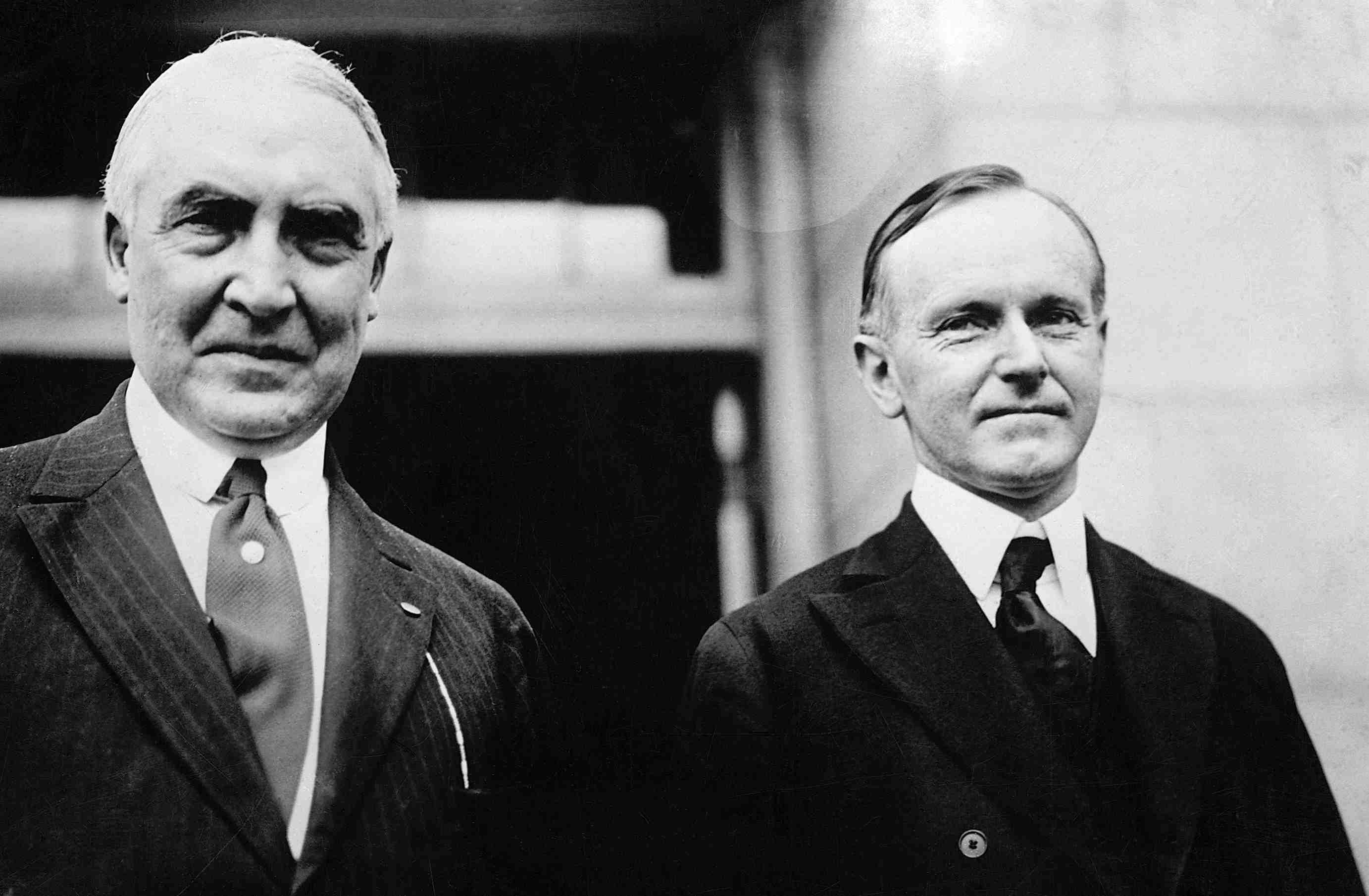
Presidents Harding & Coolidge
To date, there have been 46 Presidents of the United States. Some of these, like Lincoln and Washington, are well known by everyone. Others are all but forgotten.
Two of these are Presidents Harding and Coolidge.

While they are not well known or studied by most, these men came to office at an important time in the history of the United States – a time that would change the nation forever.
Let's go back in time and find out about these men and the times that elected them.
Under new management
During the late 1800s the world was changing; science and technology were discovering many new things, the theory of evolution was becoming more popular - and was being applied to human society, and a new class of the very rich had sprung up. And with these changes came a group known as the progressives.
Progressives wanted to change the whole world to make things more “modern.”
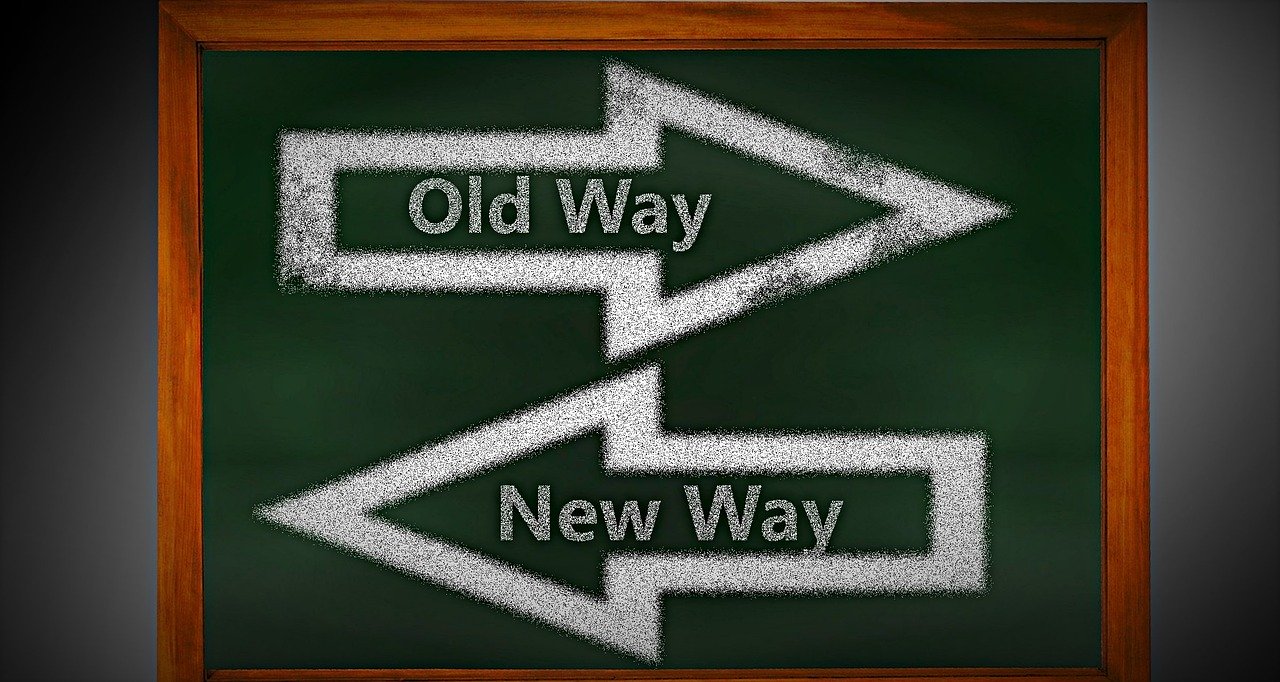
As far as government goes, this meant the following changes from the founding fathers' original ideas.
People have rights given, not by their creator, but from society. Likewise, humans have value only from their community; again, not from a creator.
Originally, the government was meant to be small, just big enough to defend and protect people's rights, peace, and provide justice. Now, the government became enormous, and worked to make society better, more modern.
People's lives should be led by those educated enough to know better. In a way, these “betters” would serve as parents to society at large.
The beginning of the 20th century saw a string of Presidents who were progressives – Theodore Roosevelt, William Howard Taft, and Woodrow Wilson. Under these men changes began to be made to the government of the United States:
The Food and Drug Administration was set up to approve all foods and medicines.
The income tax was begun.
The Federal Reserve was created and changed how money was created.
The United States Government grew in how much money it spent and the things it could do.
It looked like the country was moving on the fast track in a new direction.

But then again, sometimes things can change and go in a different direction.
Such was the case here.
Paying the piper
In 1914 the Great War (World War I) began in Europe. Over the next four years, at least 15 million lives will be lost.
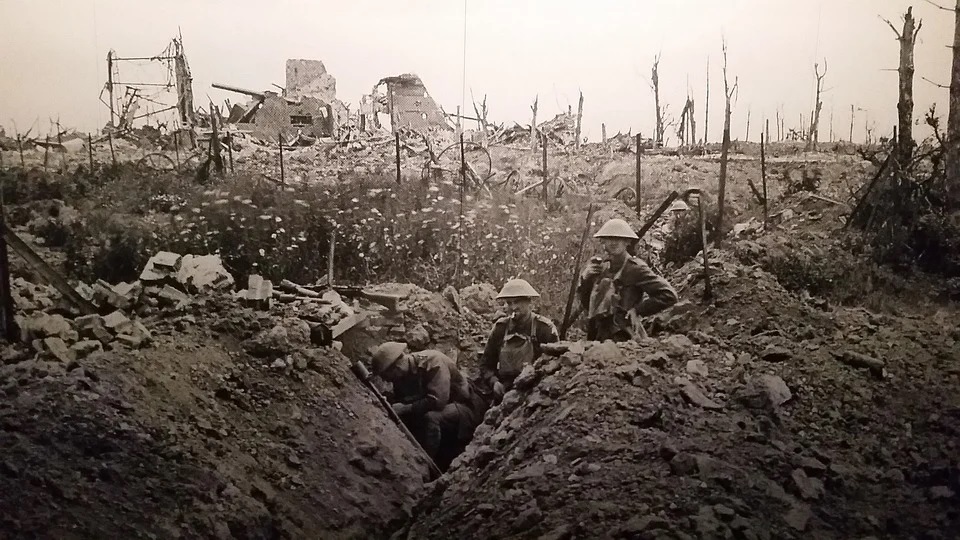
In the United States, this was seen as a horrible mess and something we wanted nothing to do with.
But there were exceptions, including President Wilson. Part of the progressive dream was bigger national governments and a government to govern nations themselves. In Wilson's case, he wanted to create a "League of Nations."
Tried as he did, he couldn't get the European nations to agree to discuss the matter after the war. There was only one way to get this discussed; the United States had to be in the war.
So in 1917 he launched a major effort to get the country to go to war and, on April 6, 1917, he managed to get a declaration of war on Germany and company.
A year and a half later the fighting ends and, when everything settles, people seriously wondered what it was all about.
This was especially true in the United States. So disagreeable was our involvement that 20 years later, when another European war began, almost every single American was saying no way – don't get me involved.
People wanted to change away from the direction things were going.
President Warren G. Harding
Warren Gamaliel Harding was born on November 2, 1865 – just a few months after the Civil War. A hard worker, he was a good student and even bought a newspaper when he was no more than 18 years old. His hard work ended up landing him in the hospital for overwork.
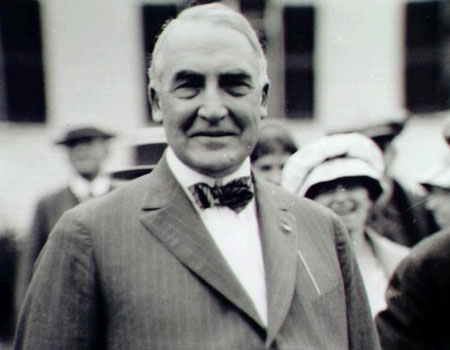
In 1920 he ran for President. He ran on the idea that the United States should return to normalcy (being normal). He pointed to our being in the war as a mistake and that America should go back to the ideals it was founded on.
And boy did the voters agree.
When all was said and done, 60% of voters voted for him – one of the largest percent in recorded history to that time.
As President, Harding would do the following:
Officially end World War I for the United States. The Senate rejected the original peace agreement because they disliked the League of Nations and it was felt that it sought revenge by punishing Germany. Harding would sign a new, friendlier treaty.
He cut taxes, bringing them down from that imposed during the war.
He worked with other nations to reduce the size of their navies.
But he wouldn't finish his term of office.
In 1923 after visiting Alaska (the first President to do so), he fell sick and died in San Francisco.
President Coolidge
John Calvin Coolidge Jr. was born on the fourth of July in 1872 in Vermont. Later he would become a lawyer and then be elected to different positions, including Governor of Massachusetts.
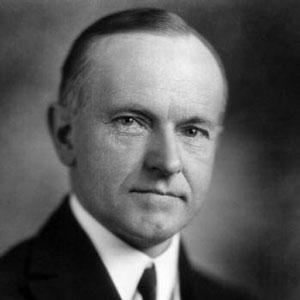
Coolidge knew how to speak and debate with others, but he was also a quiet, soft-spoken man of few words – this earned him the nickname of "Silent Cal."
There is a story, which may or not be true, which shows this point. It seemed a man came up to him once and told him he had a bet that he could make him say three words. To this, Coolidge just said, "You lose."
In 1920 he ran for Vice-President with Warren G. Harding and was elected with him. However in August 1923, upon the President's death, he became the next President.
As President, he would preside over the “roaring twenties” and would take the promise of the return to normalcy even further than President Harding. And he used his soft-spoken ways to help him – if he didn't say anything, nobody can take anything he says as a promise or obligation.
As President, he did the following:
Passed a law making all American Indians United States citizens. It was said he was a man without any prejudices.
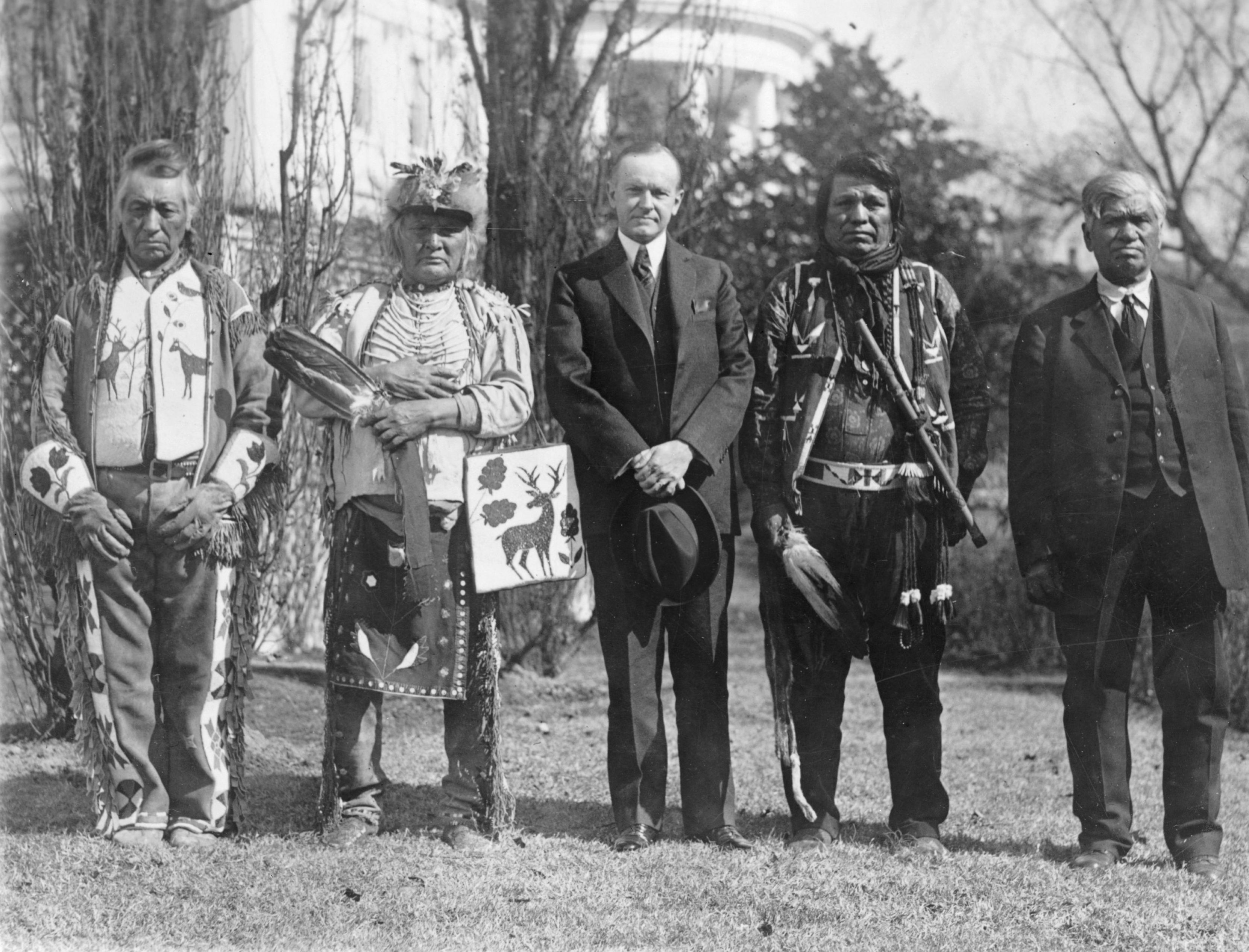
President Coolidge with members of the Osage tribe after signing the Indian Citizenship Act
Coolidge continued bringing down income taxes so that only 2% of the richest people had to pay it. This helped improve the United States economy, and the amount of taxes collected actually increased.
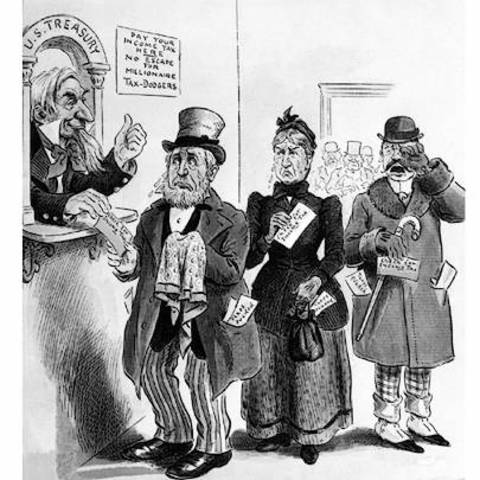
Coolidge worked to help Germany recover from the Great War and pay off its debts.
The year after becoming President, he was reelected by another large vote in his favor. He would continue to serve out his time as President while being well-liked by the American people.
Presidents Harding and Coolidge worked to turn back the clock to a pre-progressive America with small government – each in their very different ways and with different personalities.
Their efforts lasted for less than a decade but, as the United States then slid into the hard years of the Great Depression, the country changed its views to be more progressive.
The last words of Calvin Coolidge are very fitting then. Said he, "I feel I no longer fit in with these times."
On the web
Warren G. Harding: "Return to Normalcy"
This video plays Harding's famous “Return to Normalcy” speech with old photos playing in the background. A key speech to listen to in order to understand what the goal of these Presidents were.
1080p COLOR | President Calvin Coolidge First Presidential Speech (1924) - DeOldify
A colorized film from President Coolidge's 1924 election campaign.
Coolidges Greet Mr. Santa Claus Aka Coolidge Greets Santa (1930)
This film was taken in 1930, and two years after leaving office. Mr. Coolidge and his wife Grace meet "Santa," and we get a chance to hear what he sounded like.
Don't miss out on future posts! Sign up for our email list and like us on Facebook!
Check out more hot topics, go back to Home Page
Comments? You can contact me at mailbox@thehomegrownprofessor.com